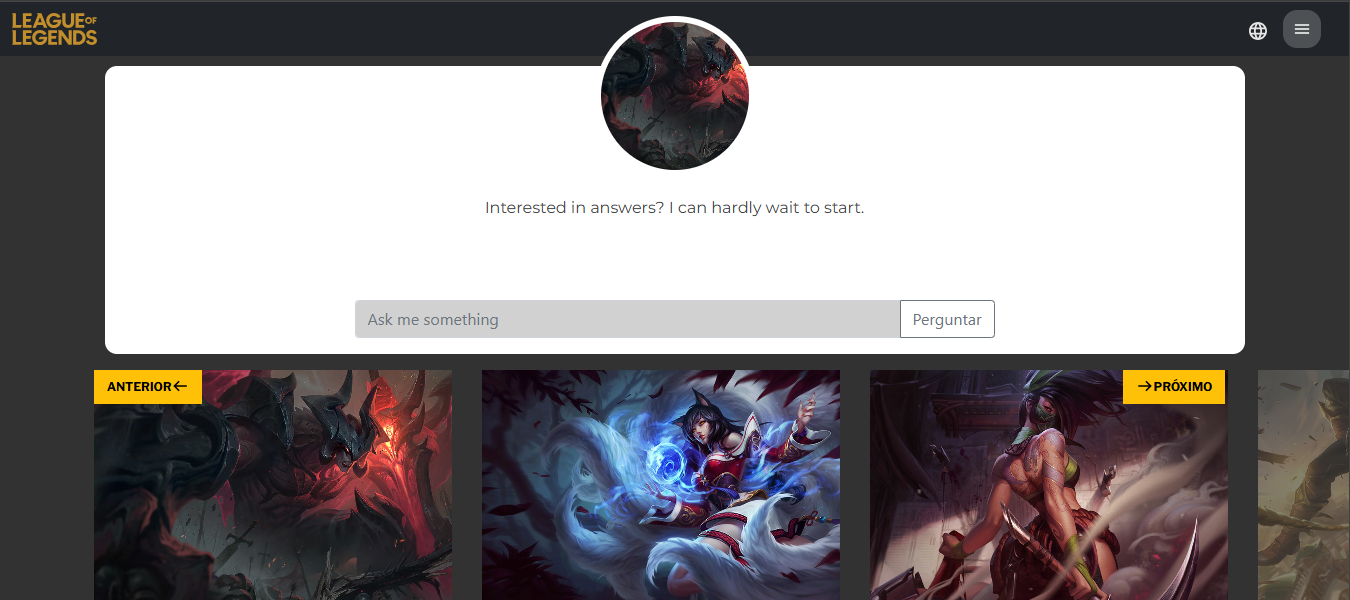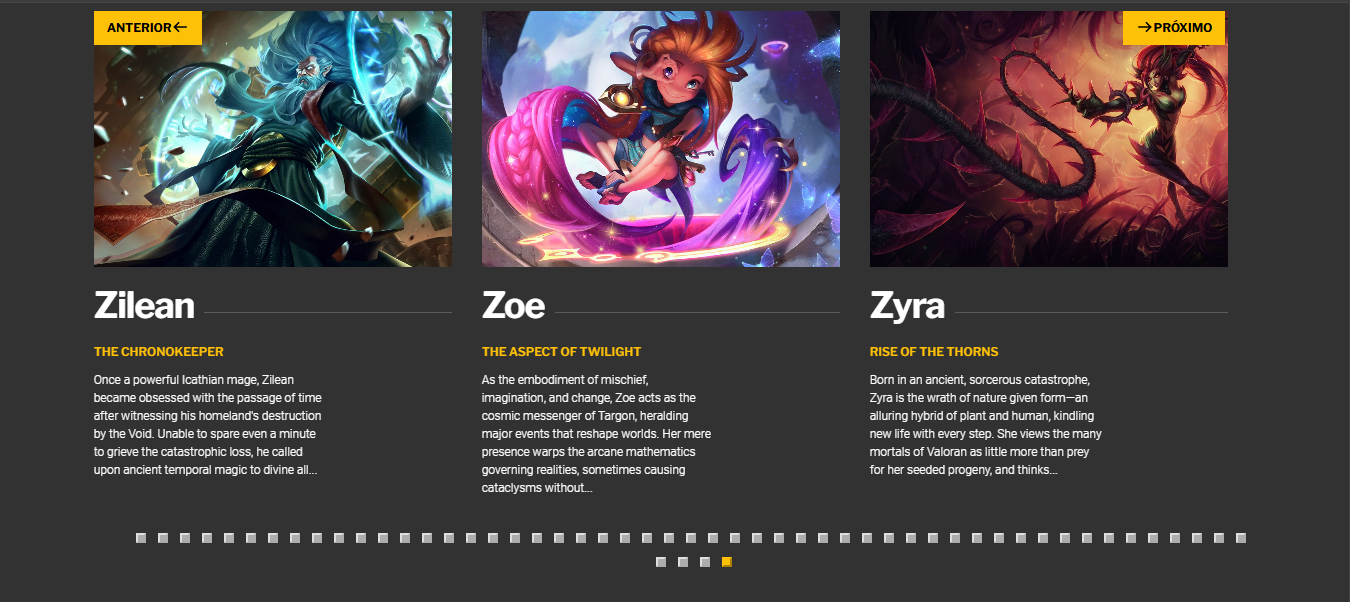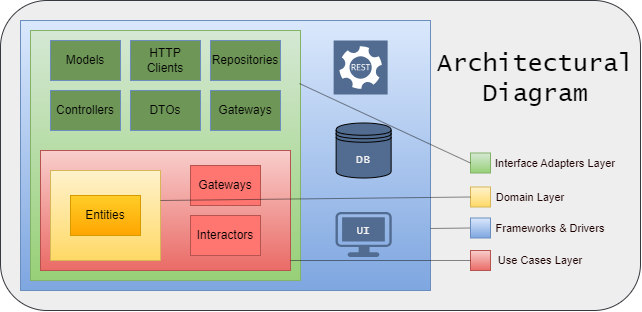This application was developed during the Santander Dev Week 2024 by the DIO platform.
The application allows users to select a champion from League of Legends, ask a question, and receive a response from a Chat Completion model that impersonates the selected champion.
This front-end was built using the Horizontal Timeline theme to display League of Legends champions in a carousel format.
To run the application, simply open the index.html file located in the project root directory.
REST API developed with Java Spring. This API enables users to engage in interactive conversations with League of Legends champions, using a large language model (LLM) integrated through an external service.
The API connects to the Llama3-8b-8192 model provided by Groq Cloud. To acquire an API key,
follow these instructions and add the key to the GROQ_CLOUD_API_KEY
environment variable in the docker-compose.yaml file.
Run the following command to start the containers:
docker-compose up -ddocker-compose up db -dThe application.properties file is configured to run the Spring dev profile by default.
To enable this, create a file named application-dev.properties in src/main/resources with the
following settings:
server.port=8080
spring.datasource.url=jdbc:postgresql://localhost:3003/lol
spring.datasource.username=postgres
spring.datasource.password=1234
spring.datasource.driver-class-name=org.postgresql.Driver
spring.jpa.open-in-view=false
spring.jpa.hibernate.ddl-auto=none
groq-cloud.base-url=https://api.groq.com/openai
# Replace this with your API key
groq-cloud.api-key=your_api_keyNote: Make sure to obtain an API key as shown here and assign it to
groq-cloud.api-key. The database settings above are provided for example purposes. If you choose to modify them, ensure that the database settings indocker-compose.yamlare updated accordingly.
In the project root directory, run:
mvn clean install -DskipTests
mvn spring-boot:runThe project follows the Clean Architecture principles, as illustrated below.
It includes five main directories:
application: Contains use cases and interfaces for accessing resources such as databases and HTTP clients.domain: Defines system entities and business-rule exceptions.infrastructureImplements the application layer's gateways, providing access to database- repositories, HTTP client interfaces, controllers, DTOs, framework-specific exceptions,
- and other Spring resources.
configurationHolds configuration files with dependency injection beans.sharedContains utility classes accessible across multiple layers.
Run the following commands in the terminal, from the application root directory:
- For unit tests:
mvn test- For integration tests:
mvn verify -PfailsafeNote: Ensure Docker is running, as the application uses TestContainers to create a PostgreSQL database in Docker for each integration test class.
GET /champions - Retrieve a list of champions.
POST /champions/ask/{id} - Ask a question to a specific champion by ID and retrieve the champion's response.
-
To view the full API documentation, including endpoints and data schemas, open the Swagger UI at:
/swagger-ui/index.html -
For API documentation in JSON format suitable for tools like Postman, Insomnia, and other API clients, go to:
/v3/api-docs.


